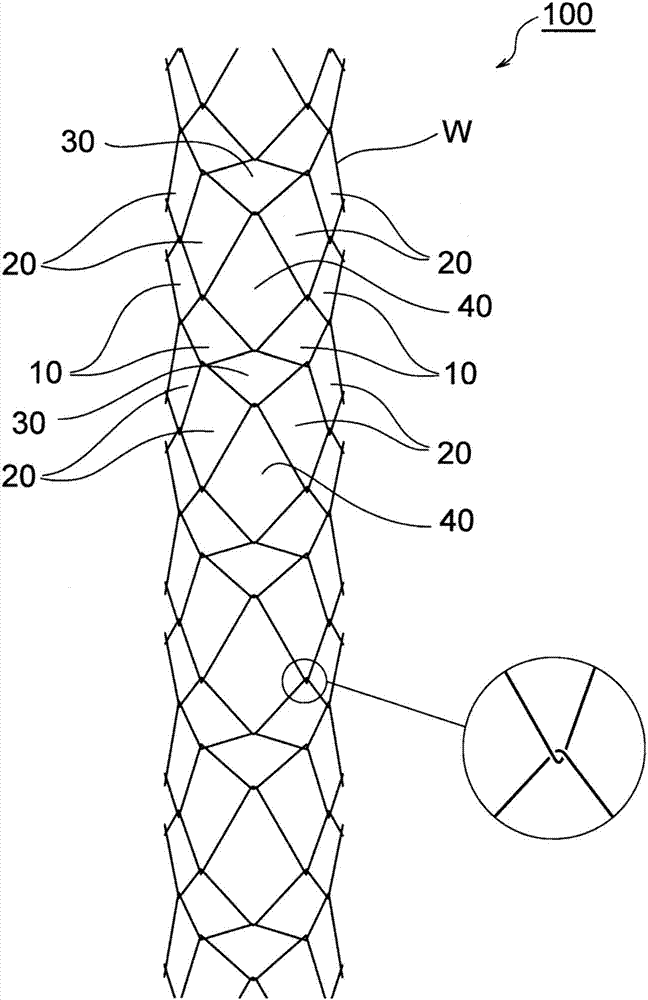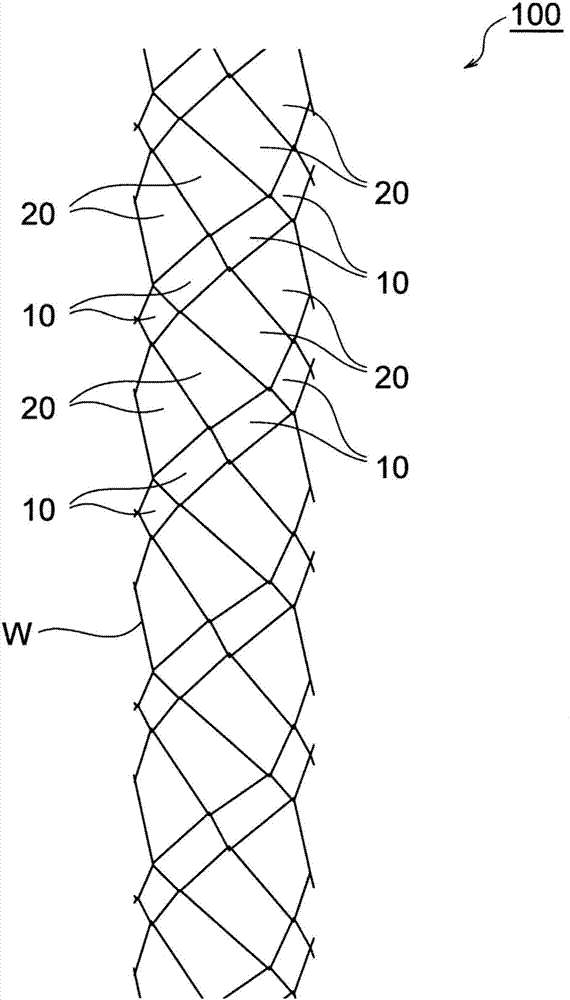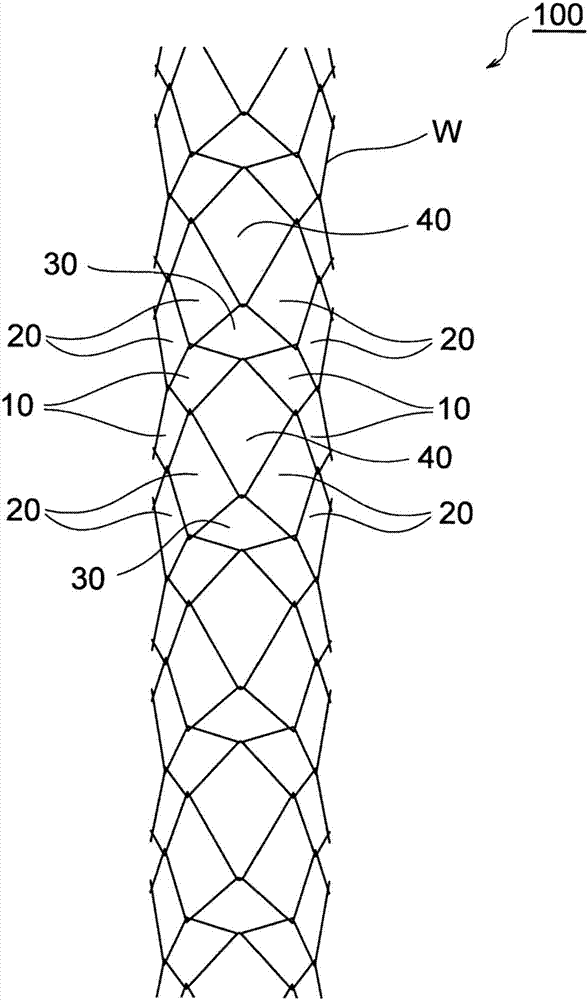bracket
A mesh and axial technology, applied in the field of stents, can solve problems such as damage to the inner wall of tubular organs, inability to place stents correctly, and shorter stent lengths
- Summary
- Abstract
- Description
- Claims
- Application Information
AI Technical Summary
Problems solved by technology
Method used
Image
Examples
Embodiment Construction
[0044] Figure 1 ~ Figure 3 and Figure 4 ( Figure 4A as well as Figure 4B The stent 100 of this embodiment having the shape shown in ) is, for example, a stent for indwelling in the digestive tract such as the intestine, and is interlocked with each other by making one wire W bend in a wave shape while advancing in the circumferential direction and the axial direction to form a wave shape. (composed in a manner of interlocking with each other) to form a cylindrical mesh pattern.
[0045] In addition, Figure 4 ( Figure 4A as well as Figure 4B The expanded mesh pattern shown by ) is the expanded state (expanded state) of the stent 100 in which no force in the diameter-reducing direction is applied.
[0046] The stent 100 is formed into a cylindrical shape by braiding one wire W.
[0047]As the wire W constituting the stent 100 , a conventionally known wire constituting a stent can be used, preferably a wire composed of a metal material, and a shape memory alloy or the l...
PUM
 Login to View More
Login to View More Abstract
Description
Claims
Application Information
 Login to View More
Login to View More - R&D
- Intellectual Property
- Life Sciences
- Materials
- Tech Scout
- Unparalleled Data Quality
- Higher Quality Content
- 60% Fewer Hallucinations
Browse by: Latest US Patents, China's latest patents, Technical Efficacy Thesaurus, Application Domain, Technology Topic, Popular Technical Reports.
© 2025 PatSnap. All rights reserved.Legal|Privacy policy|Modern Slavery Act Transparency Statement|Sitemap|About US| Contact US: help@patsnap.com



